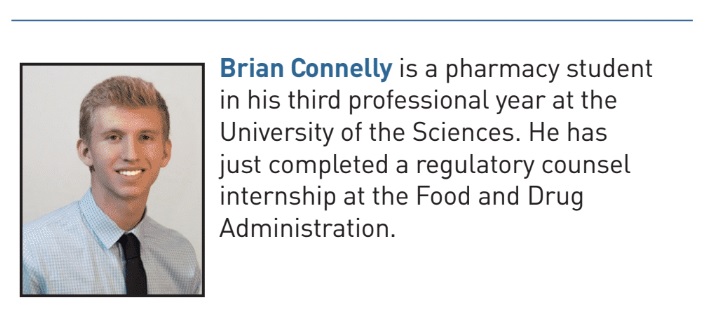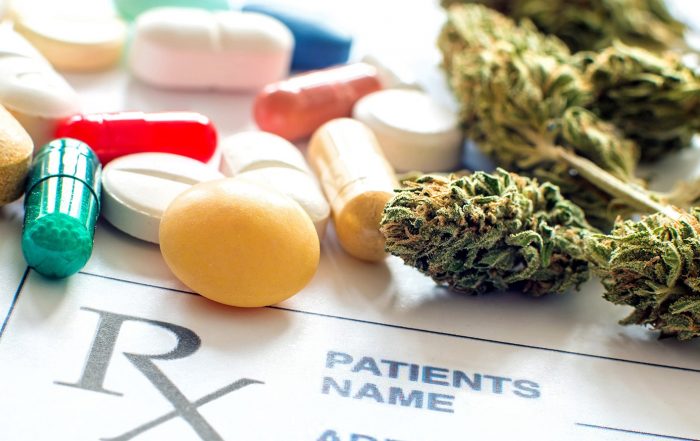
Right to Try Act: Is it the Answer for Terminally Ill Patients?
By Brian Connelly
Introduction
This article examines the recent Right to Try Act1 and its impact on the expanded access program (EAP) for investigational new drugs (INDs) currently in place at the U.S. Food and Drug Administration (FDA). The EAP is a greater risk program that was developed to provide drug access to patients with life threatening diseases. Expanded access programs are viewed as a last resort if approved drugs are unavailable or not working and there are no appropriate clinical trials for a particular patient. Similarly, the Right to Try Act (RTA) is intended for patients who have no FDA-approved treatment options for their serious medical conditions or are unable to participate in clinical trials for experimental medications. These patients may feel that their situations are hopeless and they are willing to take extraordinary risks to try unproven treatments. While FDA’s expanded access program provides these patients regulatory oversight for options to receive potentially effective experimental treatments, the RTA attempts to provide similar options without FDA approval.
FDA’s Expanded Access Program
Legislation regarding access to investigational drug candidates has been around since 1938, when the Federal Food, Drug, and Cosmetic Act (FDCA) was enacted. Further amendments to investigational drug programs were seen with the passage of the FDA Modernization Act of 1997 (FDAMA).2 Under FDA’s EAP a patient must exhaust all of his or her available options before concluding, along with a physician, that an experimental medication is the next step. The experimental medication must have been shown to be safe in a Phase 1 clinical trial.
In 2017, the process for filling out FDA forms was streamlined. Physicians fill out FDA Form 3926, also known as an Individual Patient Expanded Access Investigational New Drug Application. Although it may sound daunting, FDA provides an instructional guide for completing each field of the form, along with a guidance for industry that outlines the entire process and expands on the agency’s current thinking.3 While the form itself can be completed relatively quickly, other aspects of the process move more slowly.
Once the physician has decided that the next step in a patient’s treatment is an experimental medication, he or she would then need to gain approval from FDA, the manufacturer, and the appropriate Institutional Review Board (IRB). Given these hurdles, along with the need to attend to many other patients, the physician may not be able to fill out the form immediately, impacting the time involved in giving ill patients access to experimental medications.
The Right to Try Act: Issues Remain
The Right to Try Act provides an alternative pathway operating alongside FDA’s expanded access program. In an effort to speed access to experimental drugs, the RTA circumvents FDA by removing its authority over the administration of investigational medications to eligible ill patients. However, removing FDA from the process does nothing about other significant obstacles standing in the way of patient access. Under the RTA, the manufacturer and the IRB still need to approve the use of an experimental drug, which can take months. In an article in the New England Journal of Medicine (NEJM),4 authors suggest a potential solution involving states working together with FDA to form multicenter IRBs, spanning large geographical areas, that have a primary focus on completing individual patient Investigational New Drug Applications (INDs).
There are many issues that have plagued the expanded access program that the RTA still fails to solve. A variety of issues make manufacturers’ participation difficult. Smaller manufacturers typically do not have the resources and personnel to devote to aspects other than the clinical trials needed for approval. Also, in some cases, manufacturers will decide to waive the price of the drug to avoid issues involved in releasing it before final FDA approval. For example, if experimental use candidates are offered a price different from the final price after approval, manufacturers could face public backlash.5 If manufacturers are unable to waive the price, terminally ill patients bear the economic burden, to the tune of potentially hundreds of thousands of dollars per year. Most insurance companies will not pay for experimental drugs.
One of the greatest potential negative outcomes, both to manufacturers and patients, pertains to the severe impact of an adverse event on approval of a medication. Patients who benefit from RTA are those with a “life-threatening disease or condition,” who do not qualify for clinical trials. This status elevates the likelihood of serious events occurring. Manufacturers are required to report such events to FDA, which could jeopardize their billion-dollar drug development processes.6
The RTA attempts to mitigate the impact of adverse events by providing that clinical outcomes may not be used to delay the approval of the drug. Yet, it allows FDA to overcome this limitation on the use of clinical outcomes (1) where it determines it “is critical to determining the safety of the eligible investigational drug,” or (2) where the sponsor requests use of such outcomes, which allows for their inclusion in the review process.7 One potential issue in a small terminally ill population is that certain clinical outcomes may not be distinguishable as between the products and the patients’ own serious conditions.
Support for the Right to Try
Advocates of the RTA believe strongly that patients deserve a “right to save one’s own life,” and have the right to make decisions pertaining to their health. They believe the previous system was flawed because for manufacturers the high risk far outweighed the possible rewards. The new law affords manufacturers protection from liability if their treatments are unsuccessful, protects doctors who prescribe investigational drugs, and prevents any individual from blocking a patient’s access to investigational treatments.8
Several physicians have used state right to try laws to obtain medication for patients. For example, oncologist Dr. Ebrahim Delpassand used the Texas law to obtain an experimental neuroendocrine cancer treatment. The compound, Lutetium-DOTATATE (LU-177), had been available in European countries, and had completed all the clinical trials, but was not yet approved by FDA. Under state rights to try laws, he obtained LU-177 to treat more than 75 U.S. patients. He claimed, “Many of these patients were only given three to six months to live, now, a year later, many of them are still alive.”9 Advocates for the RTA aim to find similar results nationwide once the law is in full effect.
Conclusion
The Right to Try Act of 2018 innovates on the existing legislation but leaves more to be desired. It streamlines the process by which terminally ill patients can obtain investigational drugs, essentially by cutting out FDA reviewers. Although this does improve speed, many other factors delay the time it takes for a patient to obtain a potentially lifesaving drug. The RTA is a step in the right direction for patient autonomy and treatment, but has some extensive issues that need to be addressed going forward.
Update Magazine
August/September 2018
- Trickett Wendler, Frank Mongiello, Jordan McLinn, and Matthew Bellina Right to Try Act of 2018. Public Law No. 115-176 [Right to Try Act or RTA].
- History of individual treatment IND https://www.fda.gov/downloads/AboutFDA/WorkingatFDA/FellowshipInternshipGraduateFacultyPrograms/PharmacyStudentExperientialProgramCDER/UCM510785.pdf.
- FDA Form 3926, Guidance for Industry, https://www.fda.gov/downloads/drugs/guidancecomplianceregulatoryinformation/guidances/ucm432717.pdf
- Jonathan J. Darrow, Ameet Saratwari, Jerry Avorn, and Aaron S. Kesselheim, Practical, Legal, and Ethical Issues in Expanded Access to Investigational Drugs, The New England Journal of Medicine, January 15, 2015. https://www.nejm.org/doi/full/10.1056/NEJMhle1409465.
- Id.
- Id.
- RTA, supra note 1.
- Christina Sandefur, “Safeguarding the Right to Try,” 49 Arizona State L. J. 513 (2017).
- Id.







